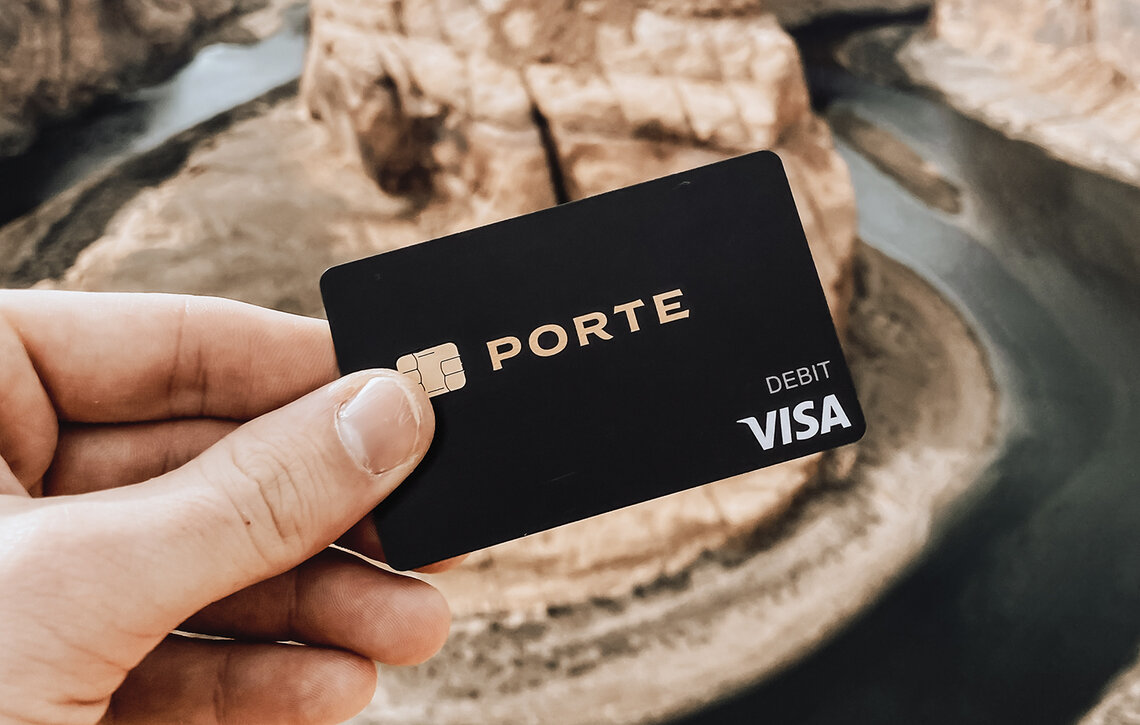April 22nd of each year is Earth Day! Earth Day is a great time to reflect on how our daily habits have an impact on the environment. Luckily for us, long gone are the days where being environmentally-friendly could break the bank. Today we have 22 earth-friendly habits that will make the planet a better place without breaking the bank.
Here’s our full list of 22 earth-friendly habits:
- Use less water 🌊
- Use a reusable water bottle 🚰
- Take old clothes to a second-hand shop 🧺
- Use reusable shopping bags 🛍️
- Meal plan before you shop 📝
- Shop at your local farmers market 🥕
- Purchase dry foods in bulk 🥜
- Try “Meatless Mondays” 🥗
- Use smaller appliances to cook your meals 🍳
- Use cloth napkins 🍴
- Save your leftovers 🥣
- Use reusable containers 🔁
- Run a full dishwasher or washing machine 🍽️
- Line dry your laundry 👚
- Create your own natural cleaning products ✨
- Clean with sponges or reusable rags 🧽
- Insulate your windows and doors 🏠
- Bump your thermostat up in the summer ☀️ and down in the winter ❄️
- Turn off the lights when you leave a room 💡
- Drive less 🚗
- Don’t idle your car 🚫
- Get a library card 📚
Now let’s take a deeper look at each one.
anchor
1. Use less water
On average, each person uses 80-100 gallons of water per day.³ Whoa! To identify ways you can reduce the amount of water you are using, start by noticing when you leave the water running — washing dishes, washing your hands, brushing your teeth. By simply turning off the water while you are scrubbing your hands clean, or while you are brushing your teeth you can reduce your water usage.
If you’re interested in reducing your water usage even more, consider installing low-flow showerheads and other fixtures.
anchor
2. Use a reusable water bottle
Over 17 million barrels of oil are used every year to create upwards of 50 billion disposable plastic water bottles. Unfortunately, only 1 out of 5 of these disposable water bottles are properly recycled.⁴ By using a reusable water bottle, you can stop your direct contribution to this issue, and reduce your carbon footprint.
If you don’t live in a place where drinking filtered tap water is an option, buying water in bulk as opposed to individual water bottles is a great alternative! It’s often cheaper to buy water in bulk too.
Bonus: Have a favorite coffee or smoothie spot? Check to see if they sell reusable cups. They’ll often give you a discount on your future beverage purchases when you use it.
anchor
3. Take old clothes to a second-hand shop
Bored with your wardrobe but don’t want to break the bank? Take these clothes to a second-hand shop like Buffalo Exchange or Uptown Cheapskate. Often these stores will give you cash for gently worn clothing and shoes.
Bonus: these second-hand shops sometimes give you more in-store credit than cash for your clothes making it easy to swap out the items you are tired of for fresh finds.
anchor
4. Use reusable shopping bags
Similar to the water bottle habit above, reusable shopping bags take less oil and resources to manufacture when compared to plastic bags. Reusable bags are often made of more durable materials too, making it possible to carry more items at once.
Across the United States stores are beginning to charge a small fee for plastic bags. While five to ten cents per bag may not seem like much, it adds up over time. If bags at your local grocery store cost ten cents, and you use four bags per trip four times per month, that’s $1.60 added to your monthly grocery bill.
anchor
5. Meal plan before you shop
To reduce food waste, take a day to plan your meals for the upcoming week. After you’ve created a meal plan, check your refrigerator and cabinets to see what ingredients you already have, then create a list of the items you need. Creating a meal plan will help you to eat all of the food you purchase, reducing food waste and overspending.
Need help with meal planning? Apps like Paprika or MealBoard are great places to start.
Interested in learning more about eating healthy on a budget? Read our blog below.
anchor
6. Shop at your local farmers market
Cut out the middleman and support your local farmers! You can find everything from fresh produce to meats to cheeses at farmers markets. And often items sold at farmers markets are significantly cheaper than what you would find at a grocery store. Why? The biggest factor is shipping the food from where it’s produced to where it’s sold.
Depending on where the food item is coming from, food can travel over 1,000 miles before ending up in a grocery store. Farmers markets, on the other hand, often have restrictions on how far away the food can be produced. Typically this restriction ranges from 200 to 50 miles. This is typically referred to as “Transport Pollution” and can help you significantly reduce your carbon footprint.
anchor
7. Purchase dry foods in bulk
When you buy food in bulk you’ll usually save money since grocery stores and farmers markets typically offer discounts and cheaper prices per unit for bulk items. Foods like grains (rice, flour, quinoa, etc.), cereals, eggs, and milk or milk substitutes are great items to start buying in bulk.
But how is buying in bulk environmentally-friendly? Typically, food that can be purchased in bulk uses less packaging when being transported from where it is produced to where it is sold. Minimal packaging also means trucks that are used to transport these items can be packed more efficiently, which helps to reduce CO2 emissions.
anchor
8. Try “Meatless Mondays”
If you eat meat, try going a day or two per week without consuming any meat for your meals. Consider alternative protein sources like quinoa, legumes, seeds, mushrooms, and nuts that are packed with protein, fiber, and other vitamins and minerals. These ingredients can also cost less when compared to traditional protein sources, like seafood, chicken, beef, or pork.
How is going meatless earth-friendly? Compare the entire lifecycle of your meat to the lifecycle of alternative protein options. In terms of energy, it takes significantly more energy to grow, harvest, transport, and prepare meats when compared to plant-based options.
anchor
9. Use smaller appliances to cook your meals
A simple way to reduce the amount of energy you use is to use smaller appliances to cook your meals. If an oven is your go-to appliance, consider using alternative appliances like crockpots, pressure cookers, air fryers, or toaster ovens. All of these alternatives use significantly less energy compared to an oven.
anchor
10. Use cloth napkins
Instead of using paper napkins, consider using cloth napkins. Cloth napkins can be used over and over, and if washed in cold water in a full load of laundry they can be more environmentally-friendly than paper napkins.
When considering what type of fabric to use for your cloth napkins, consider linen. Linen is made from flax. When compared to the cotton plant, linen is more versatile. Almost every part of the flax plant can be used and uses less water to grow. Linen is also more biodegradable.
You get extra bonus points if you make your own cloth napkins out of fabric you already own.
anchor
11. Save your leftovers
Have leftovers after cooking at home? Don’t throw them away, save them to eat for lunch or dinner the next day! Not only is it cheaper to cook larger quantities of food and eat the leftovers, but saving your leftovers also reduces the amount of methane that is produced by food waste in landfills.
anchor
12. Use reusable containers
Instead of using one-time, plastic disposable bags, try using reusable containers! There are several options when considering which reusable container you would like to use. Here’s a short list of some popular choices:
- Glass jars — it’s easy to repurpose glass jars that your favorite foods come in
- Beeswax wraps — you can often find these wraps at your local farmers market
- Silicone storage bags — there are several options on the market that are dishwasher, freezer, boil, and microwave safe
- Glass or plastic containers — like the silicone storage bags, we recommend looking for options that are dishwasher and microwave safe
anchor
13. Run a full dishwasher or washing machine
While it may be tempting to run your dishwasher or washing machine for small amounts of dirty dishes or clothes, wait to run either appliance until you have enough items to run a full load. This will help you reduce the number of times you need to run each appliance, which will help reduce the amount of energy and water you use.
anchor
14. Line dry your laundry
If you’re looking for a quick way to reduce the amount of energy you use, try line drying your laundry. By hanging up your clothes to dry instead of tossing them into the dryer, you can extend the life of your clothes — dryers can cause wear and strain on your clothes — and if you’re able to hang your white clothing outside, the UV rays of sunshine can help bleach and disinfect your clothes.
anchor
15. Create your own natural cleaning products
You can easily reduce the number of plastic bottles and amount of packaging you consume each year by making your own cleaning products. Homemade cleaning products are free of harmful chemicals since they use natural products that you may already have in your kitchen.
- Vinegar is a natural disinfectant, and when diluted with water can dissolve hard-water deposits and remove tough grime
- Baking soda can be used to help dirt and grease dissolve in water and can help remove bathroom mildew
- Rubbing alcohol is a powerful germicide and degreaser. It can clean stainless steel and is powerful enough to remove permanent marker and ink stains
- Cornstarch when mixed with water can make a non-abrasive scrubbing cleaner that is especially useful in kitchens and bathrooms since it can cut through grease and grime
This list is only the beginning of natural, common household products you can clean with and that are environmentally-friendly.
Bonus: these natural ingredients often cost a lot less than other name brand cleaners.
anchor
16. Clean with sponges or reusable rags
Instead of using paper towels for cleaning, use a sponge or reusable rag. They pair perfectly with the natural cleaning products we discussed above, and are more durable than paper towels. Depending on what you are cleaning, cotton and microfiber towels can be used several times before needing to be washed and can be more gentle on the surfaces you are cleaning.
anchor
17. Insulate your windows and doors
Have you ever had an experience where it feels like your air conditioning or heater has been running all day and the temperature of your home still feels off? This often happens due to air leaks. Air leaks happen around doors, operable windows, and other moveable features in your home.
A simple solution to this is weatherstripping. Weatherstripping is sealing these air leaks to prevent cool or warm heat from entering and exiting your home. According to Energy.gov, by weatherstripping a drafty home, you could save more than 20% on heating and cooling bills.
There are several types of materials you can use to weatherstrip your home. From felt, to a door sweep, to interlocking metal channels, there are several options at various price points for you to choose from.
anchor
18. Bump your thermostat up in the summer and down in the winter
Once you’ve weatherstripped your home you may find that you can adjust the temperature of your thermostat and still feel comfortable. Even adjusting your thermostat 1-2 degrees will make a difference in your energy consumption.
For those who are looking to significantly reduce their carbon footprint, it’s suggested to keep your thermostat at 78° F in the summer, and 68° F in the winter.
Looking for more ideas on how to use less electricity and save money? We’ve written The Ultimate Guide to Save Money on Your Electricity.
anchor
19. Turn off the lights when you leave a room
By turning off lights when you leave a room you’ll be able to reduce the energy you use, which can help reduce your carbon footprint. If you live in a place with lots of windows, consider turning off your lights during the day.
If you’re looking for other ways to reduce the amount of electricity you use in your home, consider using energy-efficient light bulbs, such as halogen incandescents, compact fluorescent lamps (CFLs), and light-emitting diodes (LEDs). These lights can use about 25-80% less energy than traditional bulbs.
anchor
20. Drive less
Next time you want to drive somewhere, consider if it’s a possibility to walk, bike, or take public transportation instead. With a little planning and extra time, you’ll find that you can run errands, visit friends, or even go into the office without driving your car.
Not only will this make the earth happy by cutting down on your carbon emissions, but your bank account will also be happy with a lower gas bill.
anchor
21. Don’t idle your car
Idling your car is when you leave your car running when the vehicle is parked. According to Energy.gov, idling your car for more than 10 seconds produces more carbon emissions than stopping and restarting your car. Recent studies have also shown that idling cars wastes about 6 billion gallons of fuel annually.⁵ About half of this number is attributed to personal vehicles, which means personal vehicles generate around 30 million tons of CO2 each year.
While the amount of emissions each car produces significantly varies, every little action adds up. In some states it’s illegal to idle your car. Punishments can range from written warnings to hefty fines. Check with your state and local governments to see what the laws around idling vehicles are in your city.
anchor
22. Get a library card
Our last tip for reducing your consumer footprint is to get a library card. Library cards are free to sign up for and grant you access to thousands of resources. Apps like Libby help you connect your phone to your city’s virtual library, giving you access to ebooks and audiobooks for free. The app also manages returning your books on time to avoid those pesky late fees.
The bottom line…
By being aware of your daily habits, you can find simple changes to make to help you reduce your carbon and consumer footprints while keeping your wallet happy.
Sources
- https://www.usgs.gov/special-topic/water-science-school/science/water-qa-how-much-water-do-i-use-home-each-day?qt-science\_center\_objects=0\#qt-science\_center\_objects
- https://www.dailyinfographic.com/10-reasons-to-use-a-reusable-water-bottle
- https://afdc.energy.gov/files/u/publication/idling\_personal\_vehicles.pdf





